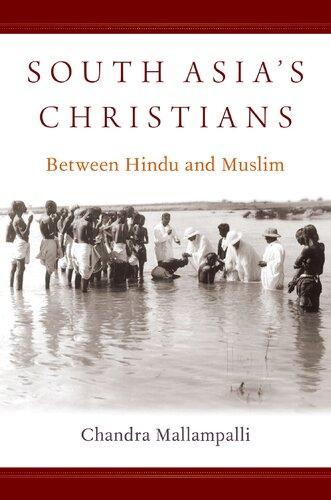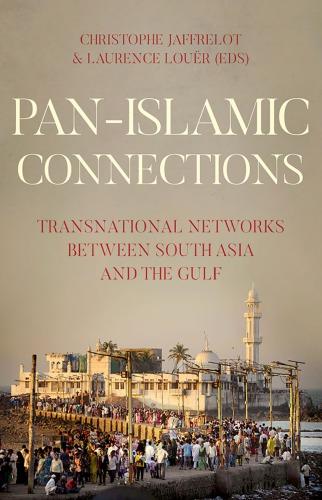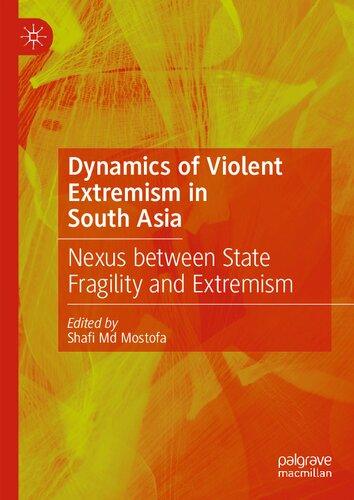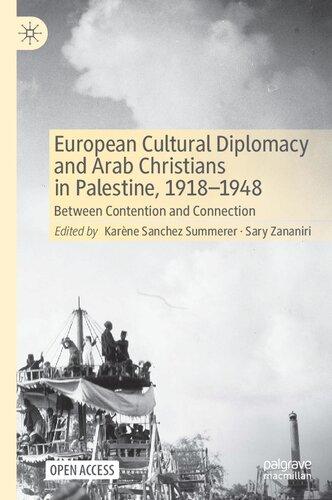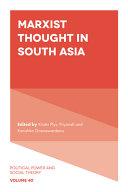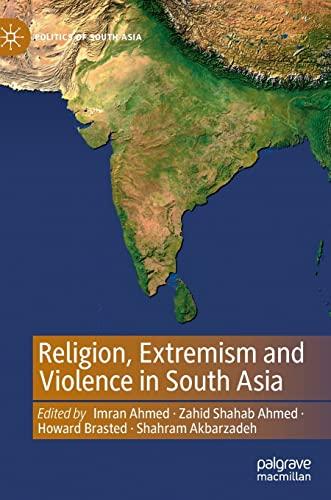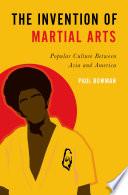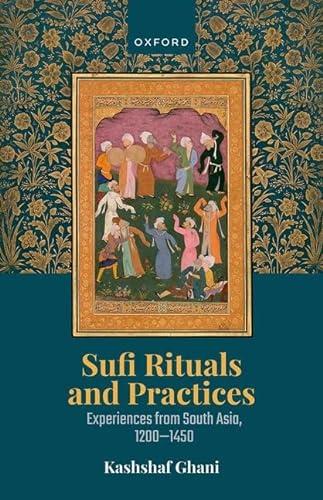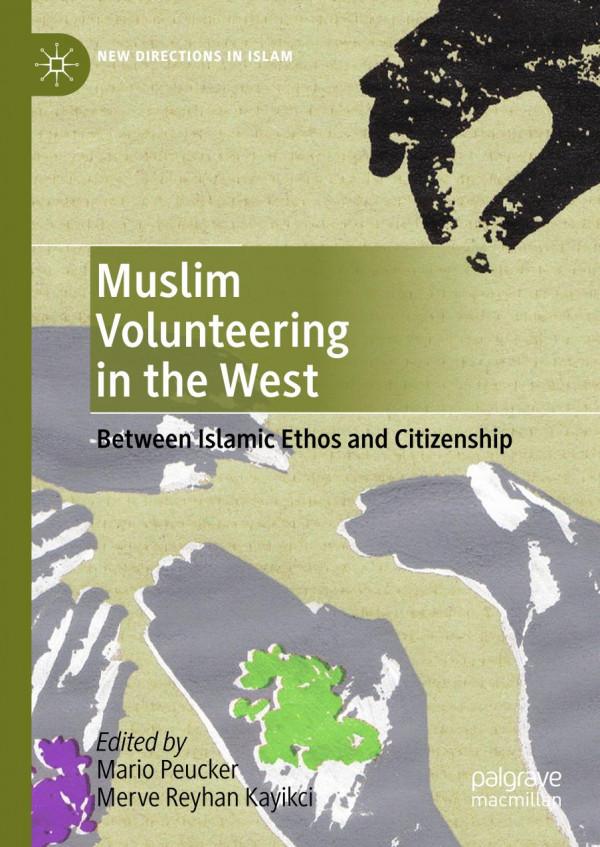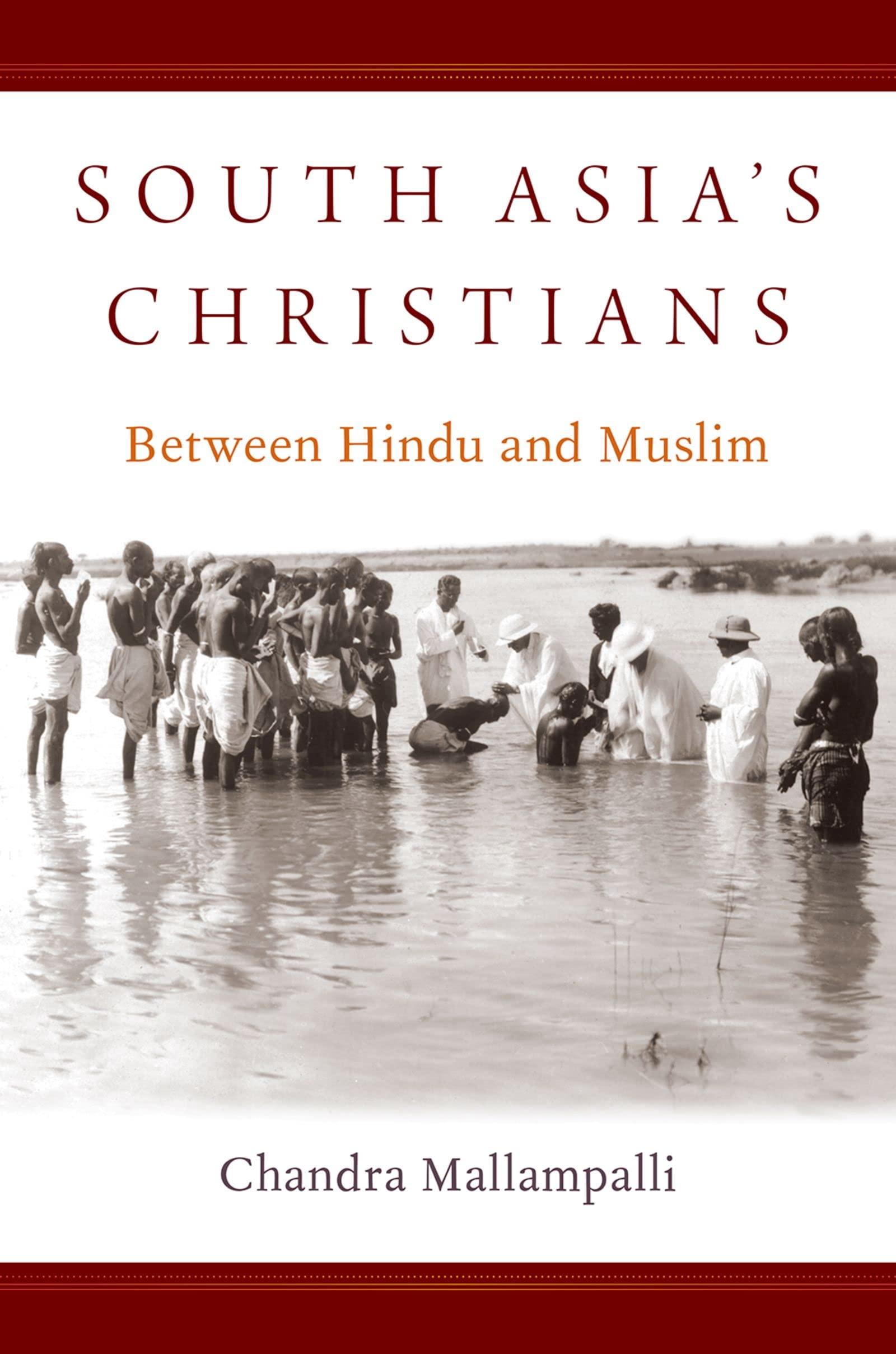Introducing the Oxford Series
Lamin Sanneh
Among the many breathtaking developments in the post-World War II and the subsequent postcolonial eras, few are more striking than the worldwide Christian resurgence. With unfagging momentum, Christianity has become, or is fast becoming, the principal religion of the peoples of the world. Primal societies that once stood well outside the main orbit of the faith have become major centers of Christian impact, while Europe and North America, once considered the religion’s heartlands, are in noticeable recession. We seem to be in the middle of massive cultural shifs and realignments whose implications are only now beginning to become clear. Aware that Europe’s energies at the time were absorbed in war, Archbishop William Temple presciently observed in 1944 that this global feature of the religion was “the new fact of our time.” An impressive picture now meets our eyes: the growing numbers and the geographical scope of that growth, the cross-cultural patterns of encounter, the variety and diversity of cultures affected, the structural and antistructural nature of the changes involved, the kaleidoscope of cultures ofen manifested in familiar and unfamiliar variations on the canon, the wide spectrum of theological views and ecclesiastical traditions represented, the ideas of authority and styles of leadership that have been developed, the process of acute indigenization that fosters liturgical renewal, the production of new religious art, music, hymns, songs, and prayers—all these are part of Christianity’s stunningly diverse profle.
Tese unprecedented developments cast a revealing light on the serial nature of Christian origins, expansion, and subsequent attrition. Tey ft into the cycles of retreat and advance, of contraction and expansion, and of waning and awakening that have characterized the religion since its birth, though they are now revealed to us with particular force. Te pattern of contrasting development is occurring simultaneously in various societies across the world. Te religion is now in the twilight of its Western phase and at the beginning of its formative non-Western impact. Christianity has not ceased to be a Western religion, but its future as a world religion is now being formed and shaped at the hands and in the minds of its non-Western adherents. Rather than a cause for unsettling gloom, for Christians this new situation is a reason for guarded hope.
Today students of the subject can stand in the middle of the recession of Christianity in its accustomed heartland while witnessing its resurgence in areas
long considered receding missionary lands, but that is the situation today. In 1950 some 80 percent of the world’s Christians lived in the northern hemisphere in Europe and North America. By 2005 the vast majority of Christians lived in the southern hemisphere in Asia, Africa, and Latin America. In 1900 at the outset of colonial rule there were just under nine million Christians in Africa, of whom the vast majority were Ethiopian Orthodox or Coptic. In 1960, at the end of the colonial period the number of Christians had increased to about sixty million, with Catholics and Protestants making up ffy million, and the other ten million divided between the Ethiopian Orthodox and Coptic churches. By 2005, the African Christian population had increased to roughly 393 million, which is just below 50 percent of Africa’s population.
It is estimated that there are just over two billion Christians worldwide, making Christianity among the world’s fastest growing religions. In terms of the languages and ethnic groups afected, as well as the variety of churches and movements involved, Christianity is also the most diverse and pluralist religion in the world. More people pray and worship in more languages and with more diferences in styles of worship in Christianity than in any other religion. Well over 2,000 of the world’s languages are embraced by Christianity through Bible translation, prayer, liturgy, hymns, and literature. Over 90 percent of the languages have a grammar and a dictionary at all only because the Western missionary movement provided them, thus pioneering the largest, most diverse, and most vigorous movement of cultural renewal in history. At the same time, the post-Western Christian resurgence is occurring in societies already set in currents of indigenous religious pluralism. In addition to frsthand familiarity with at least one other religion, most new Christians speak at the minimum two languages. It is not the way a Christian in the secular West has been used to looking at the religion, but it is now the only way.
Increasingly and in growing numbers, Tird World churches are appearing in the towns and cities of the West, while Tird World missionaries are also arriving to serve in churches in Europe and North America. Tis suggests the commencement of the process of the re-evangelization of a secularized West by orthodox Christians of former missionized countries. It is sobering to refect on the implications and political impact of such a sharp cultural encounter. Te empty churches of the West are being flled with mounting numbers of non-Western Christians whose orthodox religious views will pose a radical challenge to the secular liberal status quo, while institutions of liberal theological education are busy redefning themselves to preempt a cultural collision with the post-Western Christian resurgence. Orthodox Christian groups in the West are meanwhile positioning themselves to efect a complex strategic alliance with the new resurgence.
Mainline denominations have already felt the force of this shif. In the Roman Catholic Church the structural adjustment of Vatican II has allowed the new
wind of change to sweep through the church (if at times it has been impeded), producing movements in several diferent directions and across the world. Te New Catholic Catechism refects the change in language, mood, and style, and the rapid creation of bishops and cardinals in the non-Western church, accompanied by a steady stream of papal encyclicals, testifes to the fresh momentum of post-Western Christianity. Te papacy has been not only an observer of the change but also an active promoter of it, and, in the particular case of Pius XII, the source of a well-tempered preparation for it. Similarly, churches and denominations comprised in the Protestant ecumenical movement have felt jostled in unexpected, uncomfortable ways by the sudden entrance into their ranks of new Tird World churches. Te worldwide Anglican Communion has been reeling under pressure from the organized and concerted Tird World reaction to the consecration and installation of a practicing gay bishop by the Episcopal Church USA. Te other Protestant churches with sizable Tird World memberships have paused to refect on the implications for them of such a culture clash. Not since the Reformation has there been such a shake-up of authority in the Western church, with unrehearsed implications for the West’s cultural preeminence.
In the meantime, the number of mainline Protestant missionaries is decreasing, while Evangelical missionary numbers are increasing steadily, complemented by a rising tide of African, Asian, and other Tird World missionaries, including more than 10,000 from South Korea alone. In 1950, Christians in South Korea numbered barely half a million; by 2007, they numbered some thirteen million, and are among the most prosperous and mobile of people anywhere. It is likely that churches in South Korea rather than churches in the West will play a key role on the new Christian frontier about to open in China, which might well become a dominant axis of the religion, with hard-to-imagine implications for the rest of the world.
Tese facts and developments aford a unique opportunity and challenge for cross-cultural study of the asymmetry of the turnover and serial impact of Christianity, where a dip here is followed by a bounce there. Te intersection of the path of decline in the West with the upward swing of momentum of postWestern Christianity makes the subject a compelling and deeply rewarding one for comparative study and critical refection.
Te new reality brought about by the shif in the center of gravity of Christianity from the northern to the southern hemisphere provides the context for the volumes in this series, which are designed to bring the fruits of new research and refection to the attention of the educated, non-specialist reader. Te frst volume ofers a panoramic survey of the feld, exploring the sources to uncover the nature and scope of Christianity’s worldwide multicultural impact. Te agents, methods, and means of expansion will be investigated closely
in order to clarify the pattern and forms as well as issues of appropriation and inculturation. Te cultural anticipations that allowed the religion to take root in diverse settings under vastly diferent historical and political circumstances will be assessed for how they shaped the reception of Christianity. Similarly, Christianity’s intercontinental range as well as its encounter with other religions, including Islam, elicited challenges for the religion in the course of its worldwide expansion. Tese challenges will be examined.
Te subsequent volumes will be devoted to specifc themes and regions within the general subject of Christianity’s development as a world religion. While each volume is conceived and written individually, together the volumes are united in their focus on post-Western developments in Christianity and in the elaborations, variations, continuities, and divergences with the originating Western forms of the religion.
Preface
Tis book is the product of decades of engagement with the history of Christianity in South Asia. I wrote it at the behest of Professor Lamin Sanneh as the South Asia contribution to his edited Oxford Series on World Christianity. Sanneh wanted a volume that targets an educated general audience more than specialists in the feld. He also mentioned that the book should engage timely questions relating to Christian experience in South Asia. South Asia’s Christians discusses issues arising from Syrian, Roman Catholic, and Protestant Christianity and draws from a wider literature on South Asian history. In accordance with Sanneh’s vision, I trust that the book will be of interest to many audiences and that readers will fnd that its thematic focus on interreligious encounters provides a captivating lens for examining Christians. Sanneh’s untimely death in 2019 prevented him from seeing this contribution to his series; but hopefully my engagement with his ideas in several chapters will duly honor his immense contributions to the study of World Christianity and the development of my own research and refection.
Research for this book was made possible by funds from the Fletcher Jones Foundation Chair at Westmont College. I am also grateful to Harvard Divinity School for appointing me a Yang Visiting Scholar of World Christianity during the 2021–2 academic year. Conversations with scholars at Harvard’s Center for the Study of World Religions and with students in my seminars have helped me refne the arguments and angles adopted in these chapters. I am grateful for the supportive staf at Harvard’s Divinity School, Lamont, and Widener Libraries. A collaboration grant from the Consortium of Christian Colleges and Universities (CCCU) ofered additional support for research. I thank Pepperdine University’s Dyron Daughrity for his energetic partnership in the CCCU grant project.
Many notable scholars of South Asia deserve my sincerest thanks for taking time from their demanding schedules to read and comment on chapters of this book. Tese include Benjamin Cohen, Deepra Dandekar, Richard Eaton, Joel Lee, Joy Pachuau, Prasannan Parthasarathi, Nathaniel Roberts, John Webster, Felix Wilfred, and Richard Young. I am grateful to the readers for Oxford University Press for their hugely helpful feedback. A hearty thanks is owed to Judith Forshaw for her meticulous copyediting of this text and to Teo Calderara and Chelsea Hogue for managing the production of the book so efciently. Felix Wilfred and Patrick Gnana hosted stimulating conversations at Chennai
relating to Asian Christianity, which inspired many aspects of this project. Gudrun Lowner assisted me in acquiring illustrations. Tree research assistants at Westmont College—Kyndal Vogt, Addie Michaelian, and Carolyn Deal— provided valuable assistance. A research scholar at Harvard, Akhil Tomas, assisted me with photographs and maps. My colleagues in the history department at Westmont College supported my leave to complete this book and deserve my sincerest thanks. Our ofce secretary, Ruby Jeanne Shelton, has been a constant source of support and assistance over many years.
Tis book is dedicated to Robert Eric Frykenberg. He deserves credit like none other for bridging the study of Christian conversion in India, the history of modern India, and the burgeoning feld of World Christianity. While a graduate student at University of Wisconsin–Madison, I served as Frykenberg’s research assistant for his project “Christianity in India Since 1500.” Te project introduced me to scholars who made outstanding contributions to the feld: Michael Bergunder, Jefrey Cox, John Carman, Susan Billington Harper, Dennis Hudson, Indira Peterson, Geofrey Oddie, John Webster, Richard Young, and many others. I am also grateful to Frykenberg for introducing me as a graduate student to other pioneers of the study of World Christianity such as Lamin Sanneh, Andrew Walls, Dana Robert, and Brian Stanley. Te study of South Asian Christianity is currently being advanced by cutting edge scholarship at the highest levels, much of which has worked its way into these pages.
Introduction
On a balmy evening in the north Indian city of Jaipur, my students and I were enjoying the view of this historic Rajput city from a hotel roofop. I chose this venue for my lecture on “India Afer Independence (1947).” How would the government of this young nation hold such a large and diverse population together— Hindus, Muslims, Christians, Sikhs, and Buddhists, not to mention diferences of language, caste, and region? Was this project destined for failure or would India provide a great lesson for the rest of the world about accommodating diversity? Seventy years into India’s life as an independent nation, such questions continue to weigh heavily on the minds of many. A surge in religious nationalism and heightened minority vulnerability threaten the very foundations of India’s democracy. As I lectured, I tried to address the gravity of the situation while taking in the richness of our surroundings.
Across the city, we could hear the devotional practices of India’s two dominant religious traditions. From the minarets of Jaipur’s mosques, evening calls to prayer (azaan) declared the greatness of Allah and the tenets of the Muslim faith contained in the Kalimahs (concise Islamic creeds). As they radiated throughout the city, the recitations of azaan seemed to merge into a single austere chorus carrying some variations of intonation and volume. Against this steady hum, Hindus celebrated their festival of Dussehra, which in Jaipur commemorates events in the Hindu epic Ramayana. Te divine king Rama slays the ten-headed demon king Ravana, who abducted Sita, Rama’s wife. Tese events are celebrated with great pomp through dramatic reenactments (Ram Leela) of Rama’s triumph. Tey culminate in the burning of efgies of Rama’s enemies and the explosion of frecrackers.
It eventually occurred to me that I should stop lecturing and simply let the streets of Jaipur do the talking. What could my academic voice possibly add to this moment when local residents were making their faith traditions so audible? Te longstanding coexistence and shared experiences of Hindus and Muslims are among the greatest legacies of the Indian subcontinent and make India such a fascinating place to study. At the same time, one cannot ignore how this interwoven heritage eventually came undone. Under British rule, rising polarization and antipathy between Hindus and Muslims led to competing demands for territory and infuence and eruptions of violence. Tese developments led ultimately to the bloodstained partitioning of the subcontinent, which produced
the separate states of India and Pakistan. As the sounds of azaan merged with those of Dussehra, they called forth two histories—one of interreligious coexistence, the other of communal discord and violence. Which one would prevail?
Had I completed my lecture on that roofop, I would have drawn attention to a third religious community numbering far fewer than Hindus and Muslims, but adding a vital component to the subcontinent’s history. South Asia’s Christians, the main subjects of this book, have profoundly shaped and been shaped by the Hindu and Muslim environments in which they thrived. Te cross-cultural and interreligious interactions of these Christians are the most defning feature of their history and form the heart of what this book is about. Te three main Christian traditions of South Asia—Syrian Christian, Roman Catholic, and Protestant—have participated in the region’s diverse social tapestry in various ways. At times, Christian interaction involved overt hostility toward Hindus and Muslims, as in the case of the Portuguese in western India during the sixteenth century. Converting others within this colonial context consisted of extracting souls from their original cultural milieu and assimilating them into a community of foreigners. Tis colonial model, however, is neither the only nor the dominant form of Christian engagement in South Asia.
South Asian Christianity could never be confned to a tiny community of foreigners. Its trajectory was always marked by migratory and boundarycrossing tendencies. Te Tomas Christians of the south Indian state of Kerala trace their origins to the missionary endeavors of Jesus’s apostle Tomas. Tese Christians predate by centuries the arrival of Muslims and Europeans to the subcontinent. Te Tomas Christians (later called Syrian Christians) were not agents of imperialism but victims of it, frst under the Portuguese, then under the British. Tomas Christian communities were deeply rooted in a landscape shared with Hindus and Muslims. Te same co-participation can be observed in many Roman Catholic and Protestant communities. Foreign missionaries may have laid the groundwork for their emergence, but there came a point when local actors, practices, and beliefs played more important roles in the lives of Christian congregations. What was originally a missionary religion eventually rooted itself within local contexts, ofen in forms that were quite diferent from those the missionaries had anticipated. Indeed, a recurring theme of this book is the huge gap between missionary expectations and the forms of Christianity that ultimately prevailed in South Asia.
Tis story of a global religion becoming local is not unique to South Asia’s Christians. It is part of a much larger transformation of the world’s Christian population from being almost entirely European or North American to being predominantly African, Asian, or Latin American. Over the past several decades, surging Christian numbers in the Global South have taken the spotlight away from the historically dominant—but now declining—Christian presence
in Western nations. Tis “demographic shif” has given rise to new centers of Christian vitality and a changing ethnic complexion of the Church.1 A relatively silent element in discussions of this emerging World Christianity, however, is South Asia. Why would a region totaling a quarter of the world’s population be so easily overlooked?
A huge factor relates to a preoccupation with Christian numbers. Roughly thirty African nations now have Christian majorities; and countries such as Brazil, Argentina, and South Korea are notable for their megachurches and rapid Christian growth. Quite understandably, they factor prominently in World Christianity literature. In South Asian countries, Christians comprise a small percentage of the population (see Table 0.1), but their stories teach us vital lessons about interreligious encounters and the experiences of marginal people such as Dalits (formerly called “untouchables”) and tribals—themes that factor prominently in these chapters.
Te term “South Asia” refers to the southern region of Asia. It consists of the Indian subcontinent, lands that extend westward toward Afghanistan, those located south of today’s border with China, and those extending east toward Myanmar. Today, it includes the nation-states of India, Pakistan, Bangladesh, Nepal, Bhutan, Myanmar, and Sri Lanka. Tis book tells stories arising from many South Asian contexts, but mostly from what is now called India, and includes time periods that precede the drawing of national borders.
With a population of 1.4 billion, India, the largest nation of South Asia, captures attention as the world’s largest democracy and as a nation experiencing rapid growth in certain sectors of its economy. Far less attention is paid to its Christians, who account for less than 3 percent of its population. Images of South Asian Christians that ofen circulate in global media are those of a beleaguered minority sufering violence at the hands of militants, whether under blasphemy laws in Muslim-majority states or by Hindu extremists who oppose Christian conversions.
Paradoxically, the growth of Christianity in the Global South has coincided in India with the rise of militant Hindu nationalism. For decades, a coalition of organizations known as the Sangh Parivar (or Safron Brotherhood) has advanced its agenda of Hindutva—literally, the pursuit of Hindu-ness in all aspects of national life. Te Hindutva agenda has placed India’s secular democracy under severe stress and has heightened the vulnerability of many Christians and Muslims. Te Sangh Parivar portrays adherents of these two religions as non-Indian or foreign, despite centuries of integration into the cultural fabric of the subcontinent. Hindu nationalists have long portrayed Christian conversion as an act of deracination and denationalization. Tey have introduced anti-conversion laws in several states and have launched campaigns to reconvert Christians and Muslims to Hinduism.2
Table 0.1 Christian populations in South Asia.
Note: Tese fgures are drawn from ofcial census reports of the respective governments and relevant databases from 2010 to the present.*
*“Religion Census 2011,” All India Religion Census Data, https://www.census2011.co.in/religion. php; “C-1 Population by Religious Community: 2011,” Ofce of the Registrar General and Census Commissioner, Ministry of Home Afairs, Government of India, https://www.censusindia.gov.in/201 1census/C-01/DDW00C-01%20MDDS.XLS; “2018 Report on International Religious Freedom: Sri Lanka,” p. 2, US Department of State, Ofce of International Religious Freedom, https://www.state. gov/ wp- cont ent/ uplo ads/ 2019/ 05/ SRI- LANKA- 2018- INTERNATIO NAL- RELIGI OUS- FREE DOM-REPORT.pdf; “Census of Population and Housing: 2012. Religion,” Department of Census and Statistics, Sri Lanka, http://www.statistics.gov.lk/PopHouSat/CPH2012Visualization/htdocs/ index.php?usecase=indicator&action=Map&indId=10&Legend=2; “Age–Sex Composition of Bangladesh Population. Population Monogram: Volume 9,” p. 28, Bangladesh Bureau of Statistics (2015), http://203.112.218.65:8008/WebTestApplication/userfles/Image/PopMonographs/Volume9_Age-Sex.pdf; “Population by Religion,” p. 1, Pakistan Bureau of Statistics (2017), https://www. pbs.gov.pk/sites/default/fles//tables/POPULATION%20BY%20RELIGION.pdf; “2018 Report on International Religious Freedom: Pakistan,” p. 4, US Department of State, Ofce of International Religious Freedom, https://www.state.gov/wp-content/uploads/2019/05/PAKISTAN-2018INTERNATIONAL-RELIGIOUS-FREEDOM-REPORT.pdf; “Te 2014 Myanmar Population and Housing Census. Te Union Report: Religion. Census Report Volume 2-C,” p. 3, Department of Population, Ministry of Labor, Immigration and Population, https://myanmar.unfpa.org/sites/defa ult/fles/pub-pdf/UNION 2C_Religion EN.pdf; “National Population and Housing Census 2011,” p. 4, National Planning Commission Secretariat, Central Bureau of Statistics, Government of Nepal, https://unstats.un.org/unsd/demographic/sources/census/wphc/Nepal/Nepal-Census-2011-Vol1. pdf. Te US State Department lists the total Christian population of Bhutan as between 8,000 and 30,000; Open Doors USA lists the number of Christians as 30,000 and 3.6 percent of the total population; a 2010 Pew Research report lists the percentage of Christians as 0.5 percent. “2019 Report on International Religious Freedom: Bhutan,” p. 2, US Department of State, Ofce of International Religious Freedom, https://www.state.gov/wp-content/uploads/2020/06/BHUTAN-2019-INTERN ATIONAL-RELIGIOUS-FREEDOM-REPORT.pdf; “Table: Religious Composition by Religion by Country,” p. 1, Pew Research (2010), https://assets.pewresearch.org/wp-content/uploads/sites/11/ 2012/12/globalReligion-tables.pdf
At stake in this crucial moment of India’s history is the very future of an eclectic and integrative political life symbolized in the mahachakra (the “great wheel,” also known as the dharmachakra, the “wheel of dharma” or righteous order) found on the fag of India. Te spokes of the wheel attach the center of
political authority to diverse communities through reciprocal bonds of allegiance and trust. Historically, such bonds have integrated communities of various creeds, castes, and languages into overarching political systems. India’s secular, liberal democracy, with its protections for religious minorities, may be viewed as the most recent iteration of the mahachakra. Will this democracy survive or will it give way to an agenda keen on eradicating dissent and diversity? Tis book locates Christians within this multifaceted, interactive history. It does so against nationalistic currents that are advancing the Hindutva agenda and its alternative reading of the past.3
Locating South Asia’s Christians
Between Sanskritic, Persianate, and Arabic Worlds
An important factor that distinguishes South Asian from African or Latin American Christianity is the overarching infuence of three classical languages— Sanskrit, Persian, and Arabic—which connected India to Arabia, Persia and Central Asia, and Southeast Asia. In ancient times, a Sanskrit-based courtly culture expanded from India to the elite circles of Burma, the Khmer country, and the plains of Java. Epic Sanskrit literature such as the Ramayana and Mahabharata and puranic texts contained stories that spread through a variety of media.4 Popular devotional movements in India (or bhakti movements) sometimes absorbed and sometimes resisted the infuence of Sanskrit.
During the eighth century, Islam reached the shores of western India through trade. Later, Turko-Mongol rulers known as the Mughals would employ Persian as their administrative language. Itinerant orders of Muslims, known as Sufs, propagated their mystical and populist variety of Islam in India, producing a rich corpus of prayers, songs, poetry, and literature in Persian. Te arrival of Islam accelerated the difusion of Persianate and Arabic traditions in South and Southeast Asia, and these intersected with networks of Sanskritic infuence. Te Muslim communities that dotted India’s west coast prayed in the direction of Mecca and recited the Qur’an in Arabic.5 Many Muslims of South Asia speak Urdu, a language related to Hindi but written with the Persian script and deriving many words from Persian and Arabic.
Over time, Sanskrit, Arabic, and Persian would form the basis of elite traditions commonly referred to as “Hindu” and “Muslim.” Such religious labels, however, can be misleading. Te classical languages had spread to diferent regions of Asia well before there were clearly established Hindu and Muslim “communities” to speak of. By the nineteenth century, Persian and Arabic became more strongly associated with Islam and Sanskrit with Hinduism. And yet,
for much of the subcontinent’s history, these languages drew people of diverse backgrounds into dynamic and creative encounters with each other and ofen enriched South Asia’s many vernacular languages.
What Is “Interaction”?
As Christianity took root in South Asia, a robust interaction with Sanskritic, Persianate, and Arabic traditions followed. Te term “interaction” can refer to many types of encounters between Christians and others. One might be inclined to think of interaction purely as dialogue, and dialogue as a conversation between two or more equal parties. For the purposes of this book, interaction is dialogical, but it does not presume equality, agreement, or mutual understanding. Te following chapters showcase three domains of interaction: knowledge production, debate, and conversion. European writings (knowledge production) about Hindus and Muslims are discussed in Chapter 4 as instances of interaction that had far-reaching implications. Tey arose from attempts to grapple with the otherness of South Asian society and ofen involved the input of local informers. At the same time, they ofen reveal misunderstandings arising from prejudice, preconceived notions, and imperial interests. Apologetic encounters or debates between Christians and others are discussed in Chapter 5 as events that transformed identities. Tese exchanges are more easily recognized as interactive, however contentious and lopsided they ofen were. Conversion is rarely recognized as a form of interaction: It tends to be seen as a form of extraction (from one community into another). Chapters 6 and 7 describe the very real sense in which both individual and mass conversions became sites of interaction between old and new ideas, practices, and relationships.
What we fnd in South Asia is a rather poignant separation of the knowledgeproducing legacy of Christian missionaries from that of actual conversion. Missionaries amassed information about “other religions” hoping to convert elites to their faith and thereby infuence the masses. It was not the elites, however, who converted, but mostly marginalized Dalit and tribal peoples, largely independent of the knowledge systems produced by missionaries.6 Tis dynamic is captured by a metaphor involving soda bottles. In the playgrounds of days past, people cast rings onto a cluster of soda bottles in hopes of landing as many rings as possible onto one bottleneck or another. Most rings, however, landed on the ground. Te bottles are religions—Hindu, Muslim, Christian, and others—while the displaced rings are subaltern (non-elite) people who were not accommodated by any particular bottle.7 Missionaries and their South Asian interlocutors played an important role in shaping “the bottles” through scholarship and printed books, interreligious debates, and pamphlet wars. As much
as these “religions” competed for the allegiance of Dalits, it was never easy to locate Dalits within any given religious community. Tey ofen absorbed elements of multiple traditions and were not readily admitted or shaped by any particular community. Tis sense of identity limbo—sometimes described by terms such as hybridity, fuidity, or syncretism—is not eradicated upon conversion to Christianity, but is an enduring aspect of the experience of oppressed and marginalized peoples.8
One factor that may explain this rif between missionary knowledge and conversion is literacy. Te small social networks in which printed Christian knowledge circulated or public religious debates were staged were far removed from the illiterate masses who ended up comprising the vast majority of South Asia’s Christians. Te masses became Christian largely through their own initiatives, in response to indigenous catechists who conveyed biblical teachings to them orally. Tese Christian converts are marginal to Hindu and Muslim communities, but, as discussed in Chapters 9 and 10, they are also marginal to many established Christian communities despite their conversion.
Te Tomas Christians and Persian Christianity
Te Tomas Christians are the only Christians of India whose origins cannot be linked in any way to European infuence. Tey trace their origins to Jesus’s apostle Tomas, who they believe visited India in 52 ce and established a church there. Some aspects of the Tomas tradition can be linked to an ancient text known as Te Acts of Tomas, which describes the apostle’s missionary endeavors in India. From the third century on, through trade, migration, and exchanges of ecclesiastical personnel, the lives of the Tomas Christians and Persian Christians became intertwined. Gradually, the Tomas Christians fell under the oversight of the Church of the East, whose capital was at Sasanian Ctesiphon.
Te ties of Tomas Christians to the Church of the East did not make them any less anchored in south Indian society. Chapter 1 describes how their interactions with Persian Christians went hand in hand with their rootedness in local traditions. In fact, these Christian encounters between South Asia and West Asia foreshadow a more extensive Indo-Persian mingling that unfolded during the era of Islamic expansion. As a community that lived along India’s Malabar Coast (southwest India), the Tomas Christians were involved through trade and religion with societies on the other side of the Arabian Sea. Teir engagement with the peoples of West Asia accompanied their coexistence with Hindu and Muslim neighbors in the coastal region of southwest India now called Kerala—a dual participation that continues to the present day.
Catholic Interactions
As European Christians navigated the world of the Indian Ocean, experiences of their recent past shaped their perceptions of Hindus and Muslims in India. Back home on the Iberian Peninsula, the Catholic Inquisition had led the Church to confront heretics and purge their lands of Jews and Muslims. Portuguese Catholics introduced the same Inquisition in Goa in 1560 in order to advance their faith and justify violence and discrimination against Hindus and Muslims.
Te Jesuit missions to the court of the Mughal emperor Jalal al-Din Muhammad Akbar (1542–1605), the topic of Chapter 2, provide the earliest and most detailed accounts of European encounters with the Mughals (the Islamicate Empire that ruled India for several centuries). Jesuit priests learned Persian in order to communicate not only with Akbar, but also with his courtiers and resident clerics. Teir ultimate aim was to persuade the emperor to embrace Christianity, but their attacks on the Qur’an earned them the fury of Muslims residing at Akbar’s court. Te emperor himself, known for his religious tolerance, restrained these Muslims from beating the Jesuits when they insulted the Prophet Muhammad. But how far would his tolerance extend? Lengthy conversations that never resulted in Akbar’s conversion ultimately disappointed the Jesuits. Still, they lef behind a revealing account of their exchanges within this Indo-Persian domain.
Roman Catholics would adopt various strategies for advancing their faith and establishing a lasting presence in south India. Chapter 3 describes how Catholics became incorporated into a cultural fabric shared with Hindus and Muslims. At times, it was the patronage of local kings that made their integration into Indian society possible. In other instances, Catholics employed a deliberate strategy of cultural accommodation made famous by the Italian Jesuit Roberto de Nobili (1577–1656). What we fnd in the history of Catholicism, however, are instances of blending in as well as those of diferentiation—patterns observable across many traditions of South Asia.
Protestant Interactions
Protestants shared with Jesuits a commitment to accumulating knowledge about other religions for missionary purposes. Tis sometimes led to the belief that they could win converts by winning arguments. During the seventeenth century, when Europeans gained access to the lucrative trade of the Indian Ocean, Protestant chaplains and travelers devoted themselves to studying Hindu traditions and documenting their fndings. Chapter 4 describes how commerce and colonialism opened doors for Europeans—from the Leiden-trained
Abraham Rogerius to the German Pietist Bartholomeus Ziegenbalg—to examine Indian religions from the standpoint of their Christian beliefs. Ziegenbalg’s Tranquebar mission lef a lasting impact not only on Indian converts, but also on the experiences of Christian indentured laborers who migrated to the plantations of Burma, Penang, or Singapore.
During the following century, British missionaries assumed the roles as knowledge producers and translators of scripture. William Carey (1761–1834), the English Baptist missionary and professor of Sanskrit, was ardently committed to Bible translation and linguistics. Carey and successive missionaries collected manuscripts, translated the Bible into Sanskrit and several spoken languages, composed dictionaries and grammars, produced ethnographies, and wrote extensively about the beliefs and cultural practices of Indians. Te Anglican missionary Henry Martyn (1781–1812) produced translations of the scriptures in Arabic, Persian, and Urdu. Based on his experiences in Iran and India, he produced his Controversial Tracts on Christianity and Mohammedanism (published in 1824). Tese were widely read by learned Muslims (members of the ulama) in India and laid the foundations for debates between Christians and Muslims. Scottish Evangelicals such as Alexander Duf (1806–78) and John Wilson (1804–75) believed in combining education with evangelism to infuence the upper castes of Bombay and Calcutta.
Despite the heavy emphasis Europeans placed on knowledge and argumentation, their eforts to convert the elites to Christianity were largely unsuccessful. More ofen, they helped solidify Hindu, Muslim, Parsi, and Jewish identities and inclined members of these traditions to repudiate Christianity. Chapters 5 and 6 draw attention to missionary endeavors among the elites, which involved strident defenses of the Bible and refutations of other sacred texts. Converts from upper castes were few and far between, but they ofen drew praise or ostracism in the public sphere. Te life of the high caste Hindu convert Pandita Ramabai Dongre (1858–1922) illustrates how a Brahmin convert could gain notoriety across global Christian networks while being shunned by Hindu elites in western India for her conversion.
Dalit and Tribal Experience
Most converts to Christianity came from social classes who were far less learned than Ramabai and her Maratha Brahmin compatriots. Tey came from Dalit and tribal communities, who tended to live on the margins of Sanskritic, Arabic, and Persianate high traditions. Dalits fell beneath and beyond the four main rankings (or varnas) of Hindu society. Upper castes considered Dalits to be “polluted” and forced them to live in separate neighborhoods. Dalit hereditary occupations
were believed to have placed them in contact with substances that were ritually unclean: for example, human corpses, excrement or garbage, or carrion. Tribal peoples were deemed to be uncivilized and marginalized from Hindu and Muslim civilization. Both colonial ofcials and members of upper castes considered tribals to be “primitive” peoples because they were largely unshaped by norms of the dominant classes.
During the nineteenth and early twentieth centuries, Dalits and tribals became Christian through mass conversions. Teir passages into the Christian fold raise questions about to which religious “community,” if any, they had originally belonged and their motives for pursuing baptism. When they became Christian, they did not simply replicate practices or beliefs of elite Christian circles; rather, they revealed some combination of the old and the new. Teir simultaneous involvement in the life of the Church and in village or tribal life made their identities layered and multifaceted. Dalit and tribal Christian theology continue to play an important role in formulating beliefs that arise from experiences of oppression and marginality and the quest for dignity.9
By the twentieth century, the congregations of South Asia’s churches consisted mainly of those who were largely indiferent to missionary apologetics but responsive to the emancipatory possibility they saw in the Christian religion. Chapters 8, 9, and 10 describe the multiple personalities associated with the emerging churches of South Asia: namely, foreign missionaries, Indian Christian elites, and society’s outcastes. During the early twentieth century, winds of decolonization signaled an end of the era of foreign missionaries. As they withdrew, Indian Christian elites assumed more leadership over the younger churches and tried to Indianize Christianity by accommodating themselves to “national culture.”10
For Dalits, however, Indianizing Christianity meant Hinduizing it, a project they saw as reinforcing their subjugation. Tey felt oppressed not only by upper caste Hindus, but also by upper caste Christians who presided over their churches. Some Dalit Christians cultivated a greater sense of identity, voice, and self-determination by producing distinctively Dalit hymns, poetry, or theology. Others joined the ranks of those who grew disillusioned with older, established church structures. As discussed in Chapter 9, they would fnd empowerment, belonging, and renewal in Pentecostal and Charismatic movements. In recent decades, these movements have formed the cutting edge of both South Asian and World Christianity.
Christians and South Asian History
Christians are vital to the study of South Asia’s history in three principal ways. First, during premodern times, they highlight the participation of South Asia
in a world beyond itself. Tis is clearly the case with the Tomas Christians and their ties to West Asia. Teir interactions with Persian merchants, migrants, and ecclesiastical personnel resemble the interaction on a much larger scale between India’s Muslims and a Persianate world and Hindus with a Sanskritic world. Similar interactions with outsiders are evident in the Roman Catholic and Protestant communities of a later period. Trough contacts with missionaries and transnational fows of people and ideas, they, too, maintained ties with other lands. Rather than making Christians a foreign or exogenous community, these ties refect the Indian subcontinent’s longstanding global connections.
Te global, however, never displaced the local. Some scholars emphasize how Christians share with Hindus and Muslims a common cultural ethos. In the absence of rigid boundaries, they visit each other’s shrines and participate reciprocally in each other’s festivals.11 Tis co-participation is a very real dimension of the Syrian Christian and Roman Catholic presence in south India. At the same time, we must not overlook instances where Christians have asserted clearer religious boundaries and have developed a distinctive consciousness through revival movements, theology, or exposure to global Christian networks.
Second, Christians refashioned India’s longstanding traditions of public debate. Te historian C. A. Bayly speaks of an Indian ecumene, a sphere of public engagement where members of diferent social classes debated doctrines and notions of the godly society. Both Jesuit and Protestant missionaries reshaped the Indian ecumene by introducing their own understandings of what a “religion” should look like (for example, a sacred book, coherent doctrines, and a concrete community) and new methods for presenting their ideas before audiences. Teir printed texts and public preaching elicited spirited responses from persons of other faiths and sparked a new self-awareness among them. A new competitive economy of “religions” captivated the public imagination. During the nineteenth century, when Hindus, Muslims, Parsis, and Buddhists defended their identities in public, they entered a domain being refashioned by new technologies and forms of knowledge introduced by Christian missionaries.
South Asian converts, however, would not necessarily embrace the views or methods of foreign missionaries, and did not share their social status. An important aspect of their history relates to how they were compelled to redefne their place in postcolonial societies as “minorities.” Upon conversion, some Christians gained access to worldwide networks of knowledge, education, religious media, and denominational resources. But since the vast majority were from Dalit or tribal backgrounds, the claim that these populations were immediately grafed into global networks of wealth and opportunity is highly dubious. Te conversion of illiterate masses to Christianity constituted the greatest disruption to both Jesuit and Protestant notions of religious boundaries and orderliness. Dalits and tribals were indiferent to missionary argumentation and to their massive
tomes about “other religions.” Te unmanageability of Dalit converts and their identities not only places them between Hindu and Muslim but also at the margins of organized Christianity in South Asia.
Finally, Christians are signifcant to South Asian history as both catalysts of nationalism and the “other” of nationalism. In South Asia, Christianity never became the reigning belief system that missionaries had once hoped for; instead, it became a small minority religion in states dominated by Muslims, Hindus, and Buddhists (as discussed in Chapter 8). A vision that began with universal claims and transformative aspirations triggered anticolonial nationalisms that portrayed Christians as foreigners. Today’s Hindutva activists build upon a long history of defning a Hindu nation in opposition to a Muslim and a Christian other. Teir idea of a Hindu nation includes practically anyone who is not Muslim or Christian. Tose whom Europeans had formerly and erroneously lumped together as “Gentiles” appear to have become by default the “Hindu majority” of modern India.12
Te distinction between majority and minority religions fnds meaning chiefy within the context of the modern nation-state. Tis national framework risks portraying religious communities as monoliths and ignoring how issues of gender, caste, race, and wealth can play more prominent roles than “religion” in defning one’s place in society. In South Asia, a low caste, dark-skinned Christian woman occupies an entirely diferent social space from a high caste, fair-skinned Christian man. Tey are not equally “vulnerable minorities,” but the national framework of majority versus minority makes it appear that way. Te Syrian Christians of Kerala belong to a “minority religion,” but they wield enormous infuence as landowners and share more in common with upper caste Hindus than with Dalit Christians.13 Whether by blending in or by keeping apart, Christians of all social classes have had to respond to the politics of their national contexts in order to ensure their survival and fourishing.
South Asia and World Christianity
It is widely assumed that Christian converts in South Asia became “brown sahibs” who mimicked the customs and habits of Europeans. Besides learning the language of the colonizers, some converts adopted foreign names, wore Western clothing, or intermarried with members of the ruling race. Tey also derived laws of marriage and inheritance from the colonial societies that drew them into their fold.14 Tis model of “conversion as assimilation” has inclined many to regard Christian missionaries as the “handmaidens of imperialism,” converts as extensions of Western Christianity, and Christian conversion as a form of acquiescence to white supremacy.15
Te problem with this model is that it projects the experience of small enclaves of colonial Christianity onto the Christian population as a whole. Just as cricket originated in England and eventually became a genuinely South Asian sport, Christianity underwent a similar transformation through which it became a genuinely South Asian religion.16 Te colonial model fails to recognize the ways in which generations of Christians adhered to their own regional languages, cuisines, customs, and ways of living out their faith.17 Tis sense of local agency and diference from the foreign missionary is vital for understanding the experience of Christians in Africa, Asia, or Latin America. Te diference arises from the ways in which Asians or Africans reached for the Christian message and shaped it according to their unique histories, beliefs, and cultural assumptions. Te main story, as the historian Lamin Sanneh observes, was not about the missionary’s “discovery of indigenous peoples, but of the indigenous discovery of Christianity.”18
Te World Christianity Paradigm
Te growth of Christianity in the Global South makes it more difcult than ever to portray Christianity as a Western religion with mere ofshoots in the non-Western world. Historians such as Andrew Walls and Lamin Sanneh have argued that, as Asian, African, and Latin American societies became increasingly Christian, those of Europe and North America underwent a great recession in their Christian identity.19 Drawing heavily upon their study of African Christianity, Walls and Sanneh presented an alternative to the colonial model—a “World Christianity paradigm”—for understanding the growth of non-Western Christianity.
Central to their argument—which has its share of critics—is the role of Bible translation and the active agency of Africans in the conversion process. European missionaries relied heavily on Africans to teach them the nuances of local languages and how to translate biblical vocabulary into African mother tongues. Te reliance upon Africans to teach, translate, preach, and baptize altered the power equation in ways that made missionaries the students and Africans the teachers.20 As African Christians absorbed and refashioned characteristics of local spirituality, they defed missionary expectations and notions of orthopraxy. Te result was not simply a translated Bible, but a translated religion.
For Sanneh and Walls, Christian pluralism is a good thing. As the gospel is translated into various mother tongues, it yields diferent varieties of Christianity across many contexts. In theological terms, these are moments when the gospel incarnates itself into local experience, just as the eternal Logos became incarnate in the person of Jesus Christ.21 One of the efects of translation is the decentering
